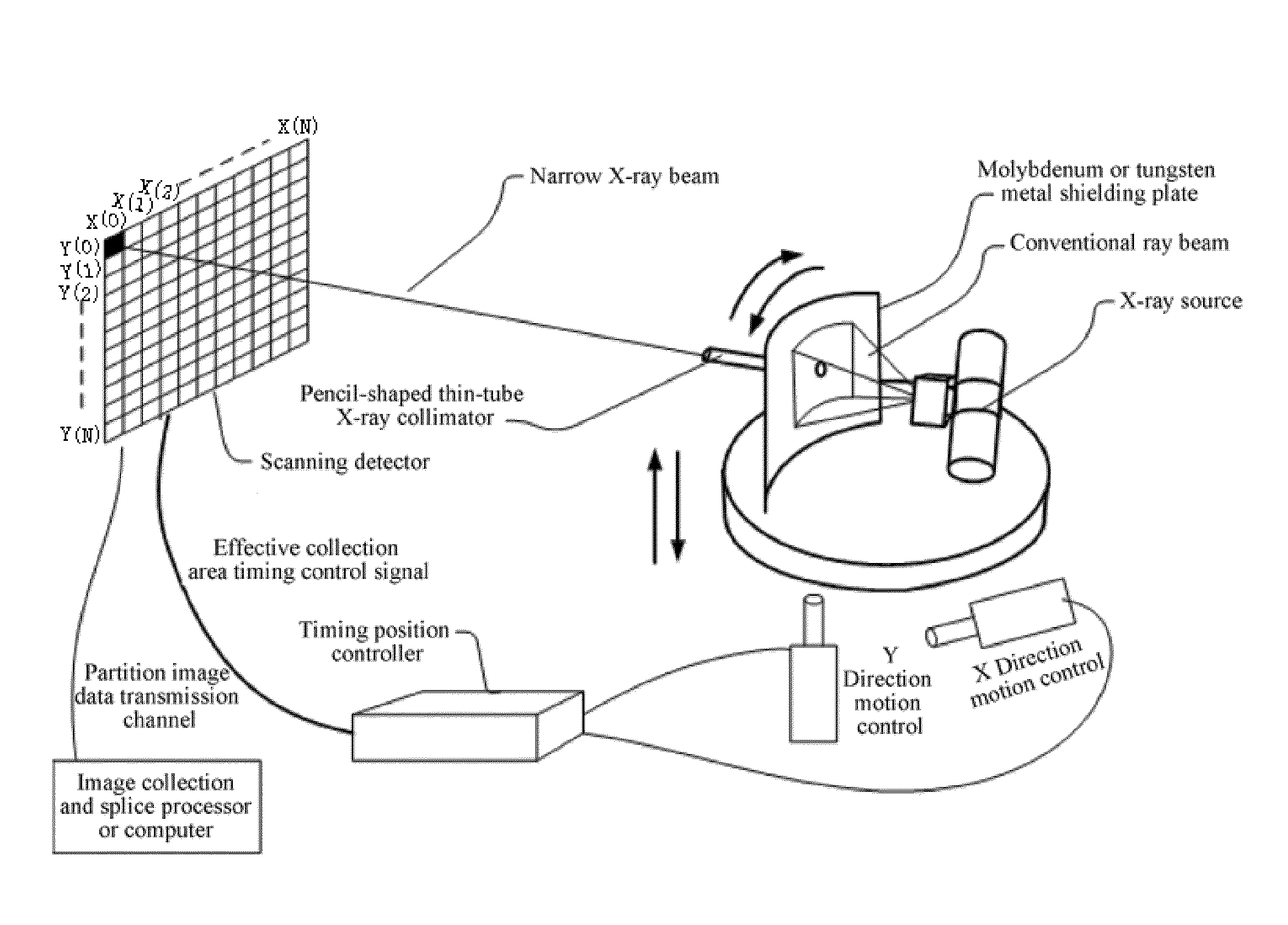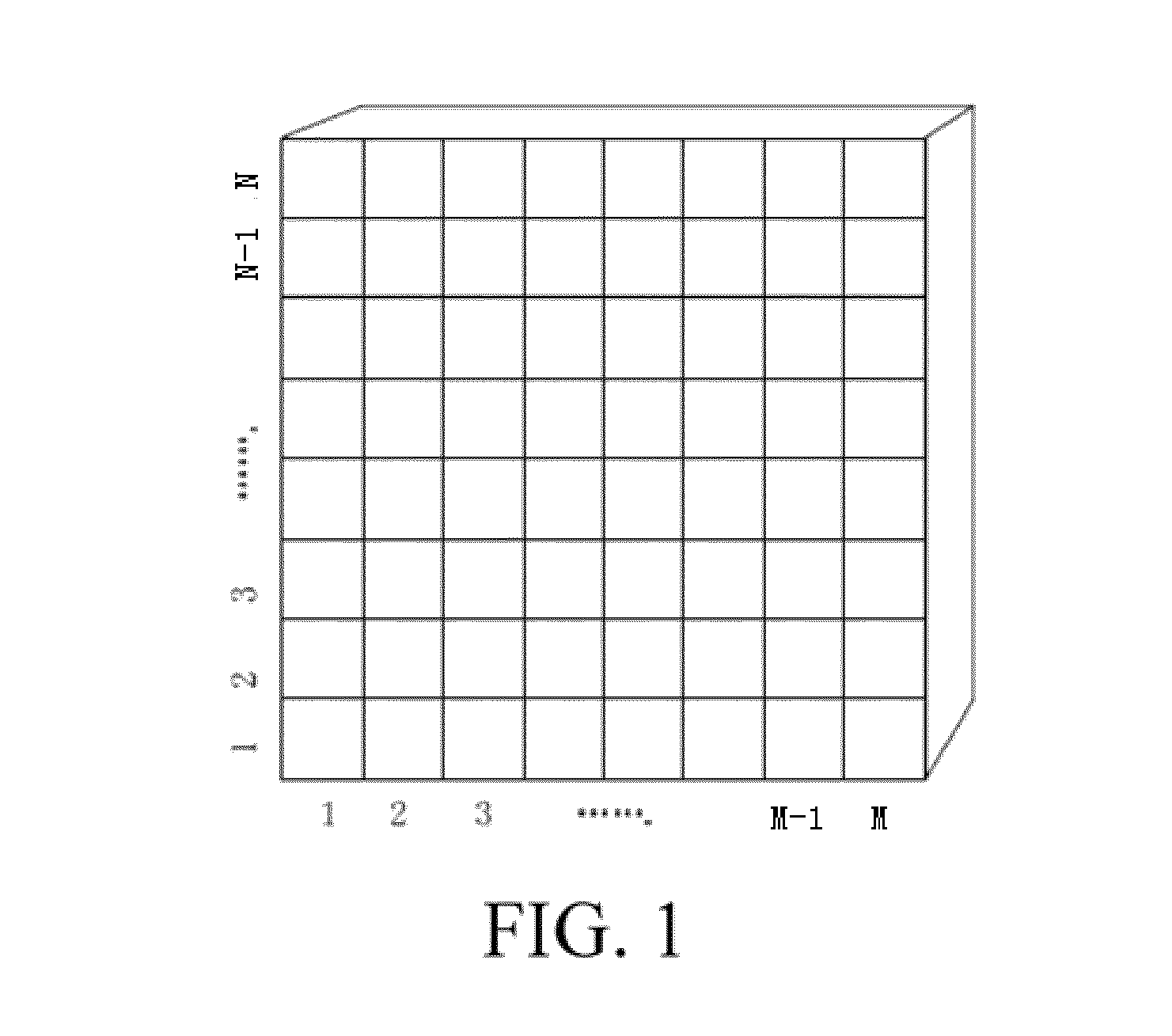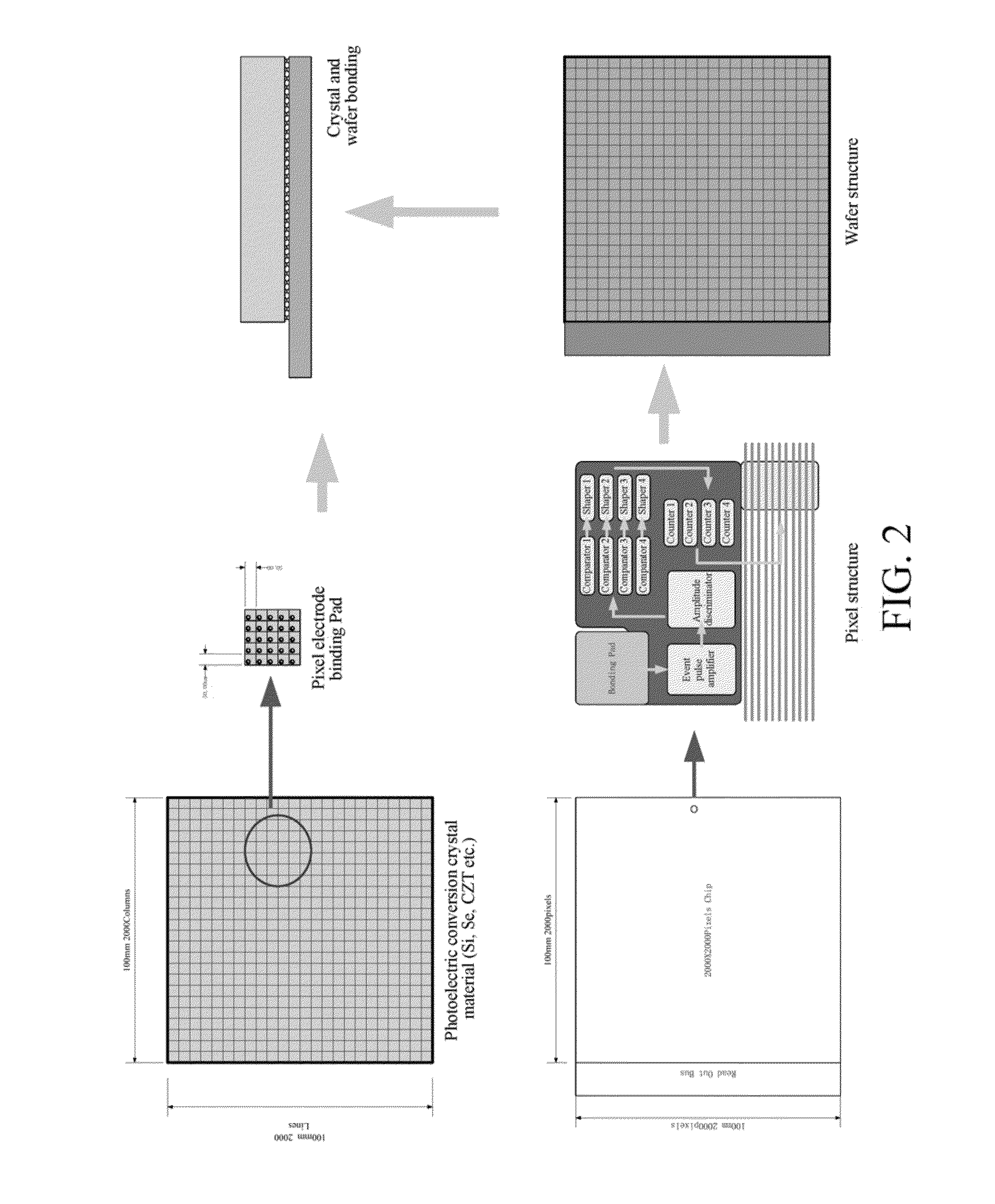Photon count-based radiation imaging system, method and device thereof
- Summary
- Abstract
- Description
- Claims
- Application Information
AI Technical Summary
Benefits of technology
Problems solved by technology
Method used
Image
Examples
embodiment 1
[0121]Embodiment 1 of the present invention provides a photon count-based radiation imaging system, as shown in FIG. 9, the radiation imaging system includes an X-ray source, a scanning platform for bearing a sample, a photon count detector, a three-dimensional reconstruction system and other components. The X-ray source is a micro-focus near monochromatic light source, used for emitting an X-ray to the sample on the scanning platform. After an X-ray is filtered by a filter, a near monochromatic X-ray is obtained and irradiated onto a tested sample. After the X-ray penetrates the sample, physical phenomena such as absorption, reflection, refraction, transmission, phase shift and the like may be generated, and lots of photons carrying material information in particular spatial positions are generated in an imaging plane. The photon count detector is used for counting photons in the imaging plane, so as to obtain projection data and energy data of incident photons, and transmits the p...
embodiment 2
[0148]In the X-ray imaging technology, a low-power-consumption micro-focus X-ray source is used, has enough coherence, but has a too narrow light beam and too small luminous flux, and the detector requires a quite long exposure time, which is limited to be extent during clinical application. As shown in FIG. 18, the present invention uses a grating self-imaging effect to design a light path, to cause an image of a first phase grating to match a second absorption grating, and then analyzes moire fringes formed by the sample, which can quantitatively recover a wave front. So, the present invention no longer relies on high-brightness and higher-coherence synchronous radiation light sources.
[0149]To this end, Embodiment 2 of the present invention provides a photon count-based radiation imaging system, and uses the photon count technology and the grating imaging technology to solve technical defects of the prior art. As shown in FIG. 19, it is an overall schematic structural diagram of a...
embodiment 3
[0197]As the grid of the X-ray source in the prior art has the following shortcomings: on the one hand, as the focal point of the grid is fixed, imaging requirements for different parts cannot be met, and the imaging quality is seriously affected; on the other hand, the grid per se also blocks some X-rays that should be shot to the photon count detector. In order to eliminate such adverse effects, radiation dose of the X-ray must be increased, which causes more radiation to tested objects especially patients and medical staff, increases the manufacturing cost of the photon count detector, and brings about difficulty to environmental protection work of the hospital.
[0198]As the virtual grid technology in the prior art does not filter scattered rays reaching the photosensitive plane of the photon count detector, scattered ray and straight ray data are all sampled. For the thick position radiography where scattered rays take a greater proportion, minor details of the straight rays have...
PUM
 Login to View More
Login to View More Abstract
Description
Claims
Application Information
 Login to View More
Login to View More - R&D
- Intellectual Property
- Life Sciences
- Materials
- Tech Scout
- Unparalleled Data Quality
- Higher Quality Content
- 60% Fewer Hallucinations
Browse by: Latest US Patents, China's latest patents, Technical Efficacy Thesaurus, Application Domain, Technology Topic, Popular Technical Reports.
© 2025 PatSnap. All rights reserved.Legal|Privacy policy|Modern Slavery Act Transparency Statement|Sitemap|About US| Contact US: help@patsnap.com



